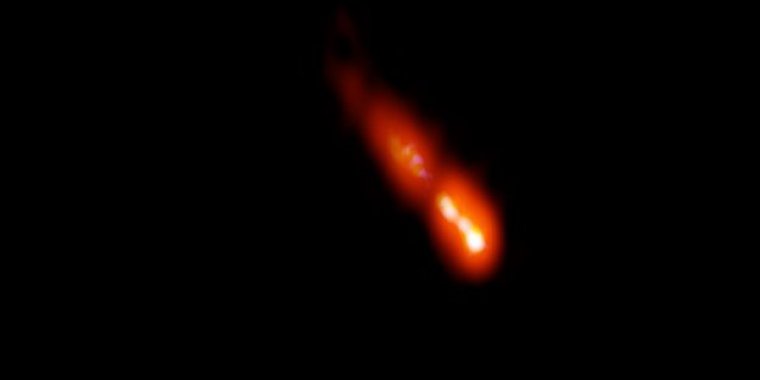| News / Science News |
Glimpse of a blazar in the early universe
The supersharp radio "vision" of the U.S. National Science Foundation's Very Long Baseline Array has revealed previously unseen details in a jet of material ejected at three-quarters the speed of light from the core of a galaxy some 12.8 billion light-years from Earth.

A blazar with its jet pointed toward Earth, the brightest radio-emitting blazar yet seen at such a distance. Photo: Spingola et al.; Bill Saxton, NRAO/AUI/NSF
The galaxy, dubbed PSO J0309+27, is a blazar, with its jet pointed toward Earth. A blazar is a feeding super-massive black hole in the heart of a distant galaxy that produces a high-energy jet viewed face-on from Earth.
PSO J0309+27 is the brightest radio-emitting blazar yet seen at such a distance; it’s also the second-brightest X-ray emitting blazar at such a distance.
PSO J0309+27 is viewed as it was when the universe was less than a billion years old, or just over 7% of its current age.
In this image, the brightest radio emission comes from the galaxy's core, at bottom right. The jet is propelled by the gravitational energy of a supermassive black hole at the core and moves outward, toward the upper left.
The jet seen here extends some 1,600 light-years and shows structure within it.
An international team of astronomers observed the galaxy in April and May of 2020.
"This research is important for understanding jets launched by feeding supermassive black holes," says Joseph Pesce, a program director in NSF's Division of Astronomical Sciences. "The observation allows for a more detailed assessment of differences between objects that are large distances from Earth (and in the early universe) and those relatively closer to Earth." (National Science Foundation)
YOU MAY ALSO LIKE





